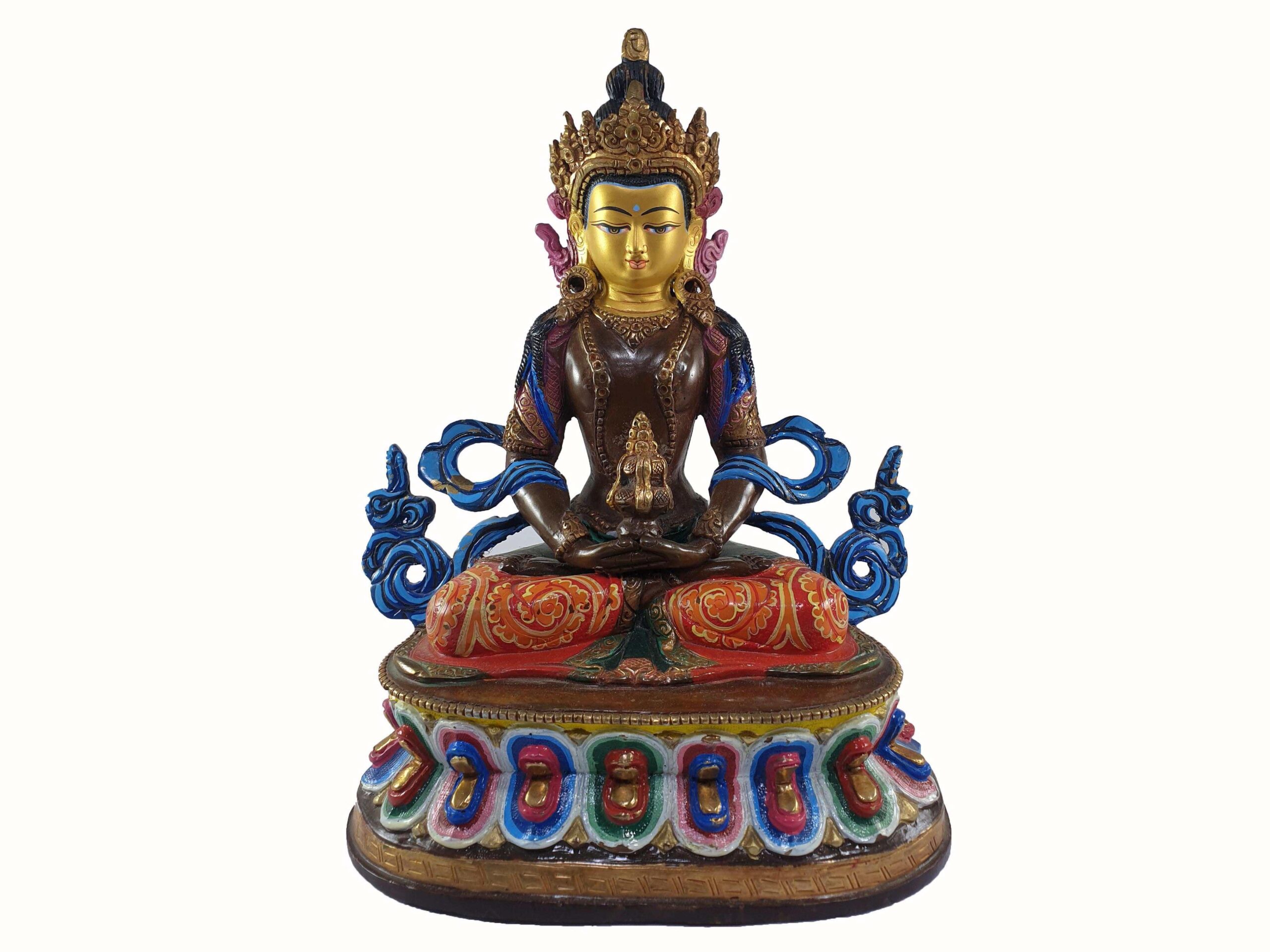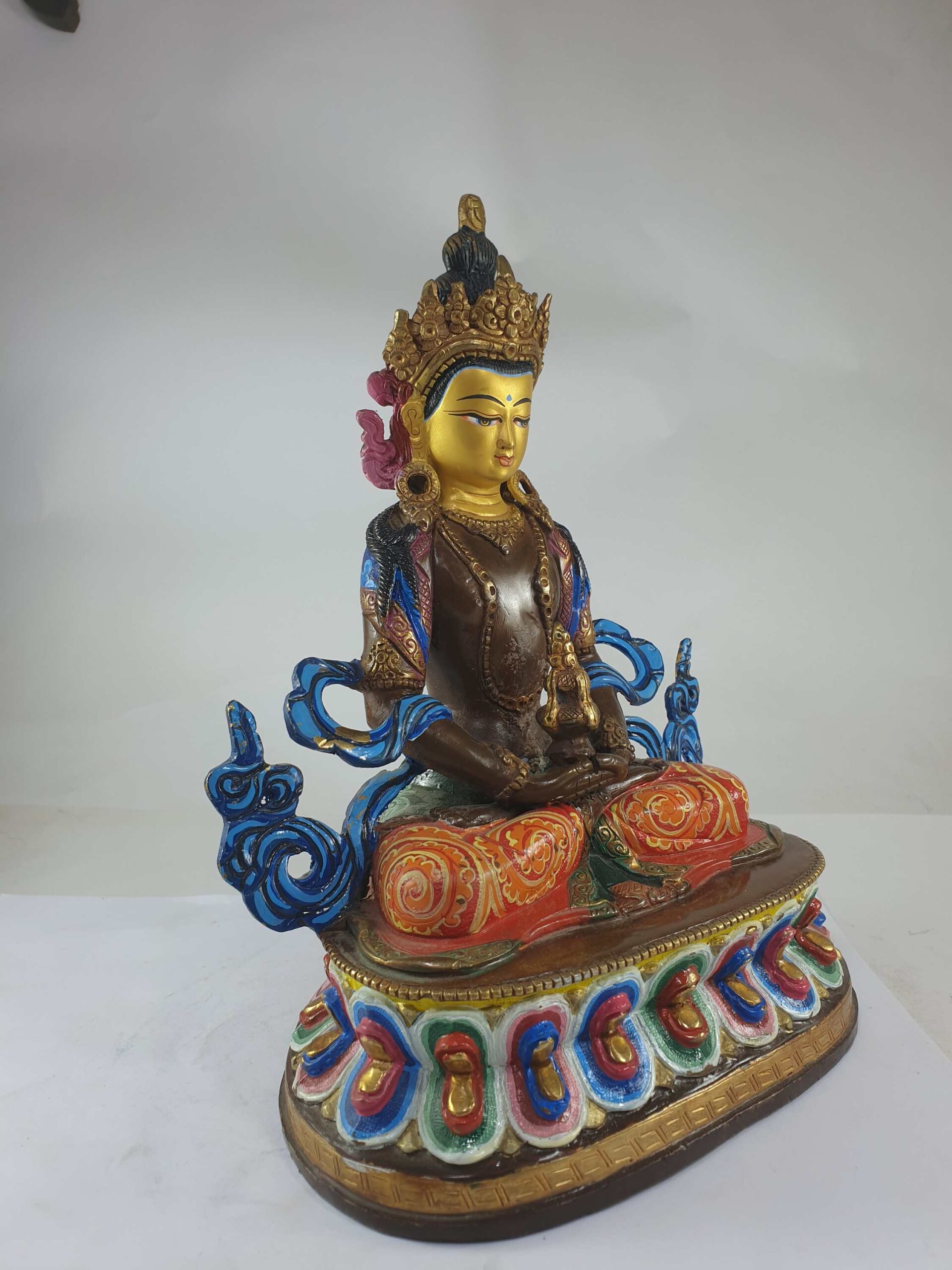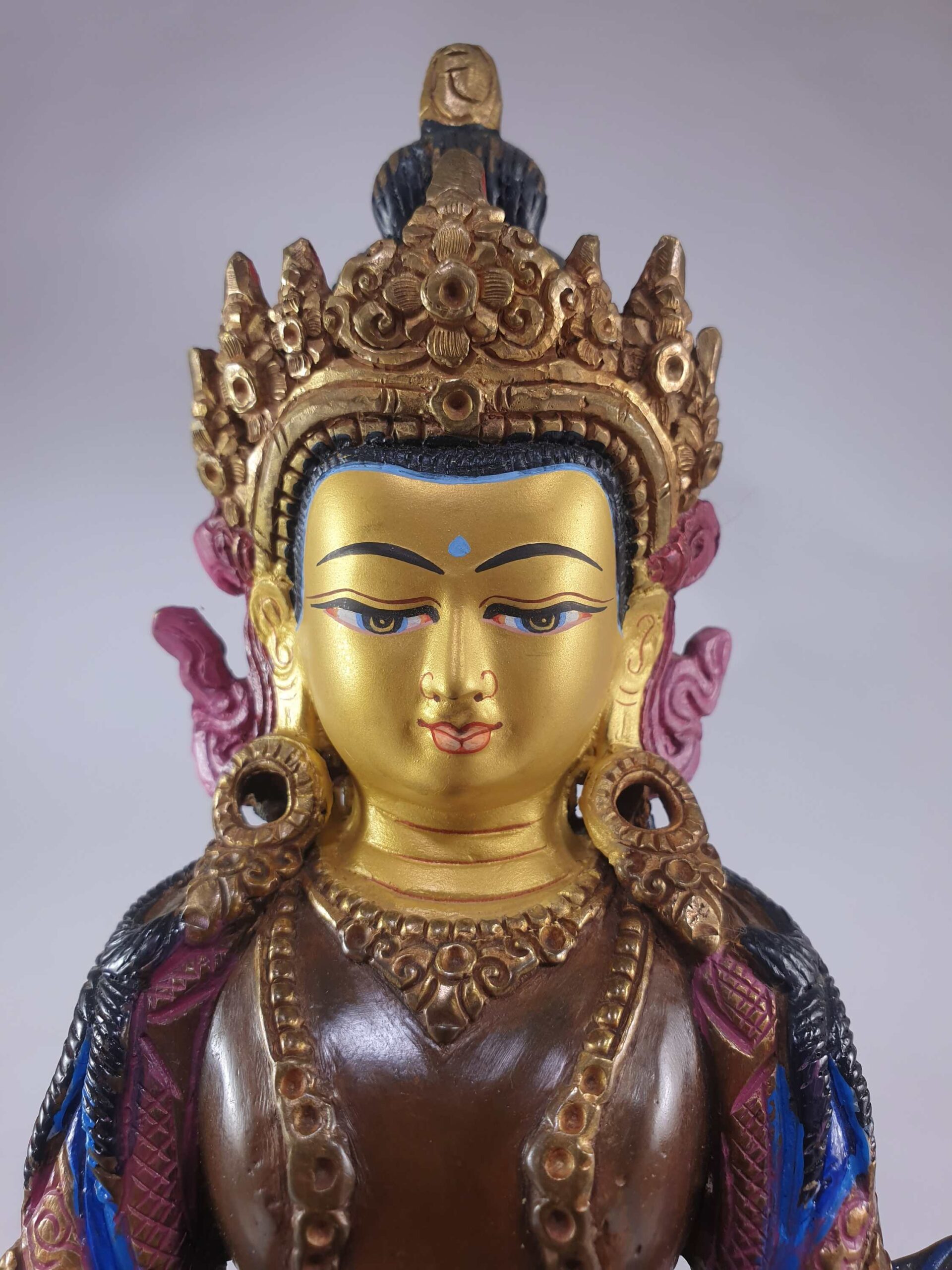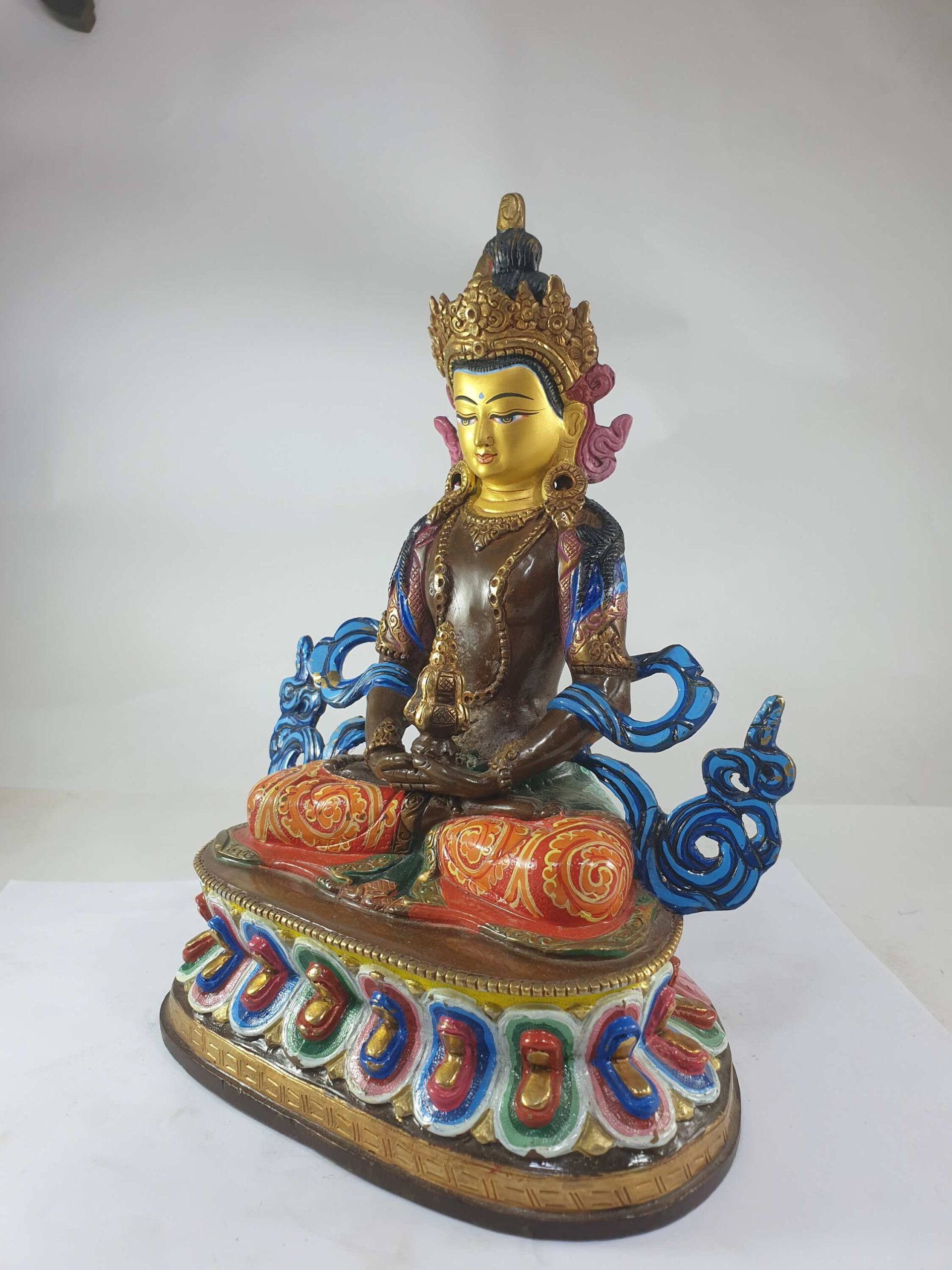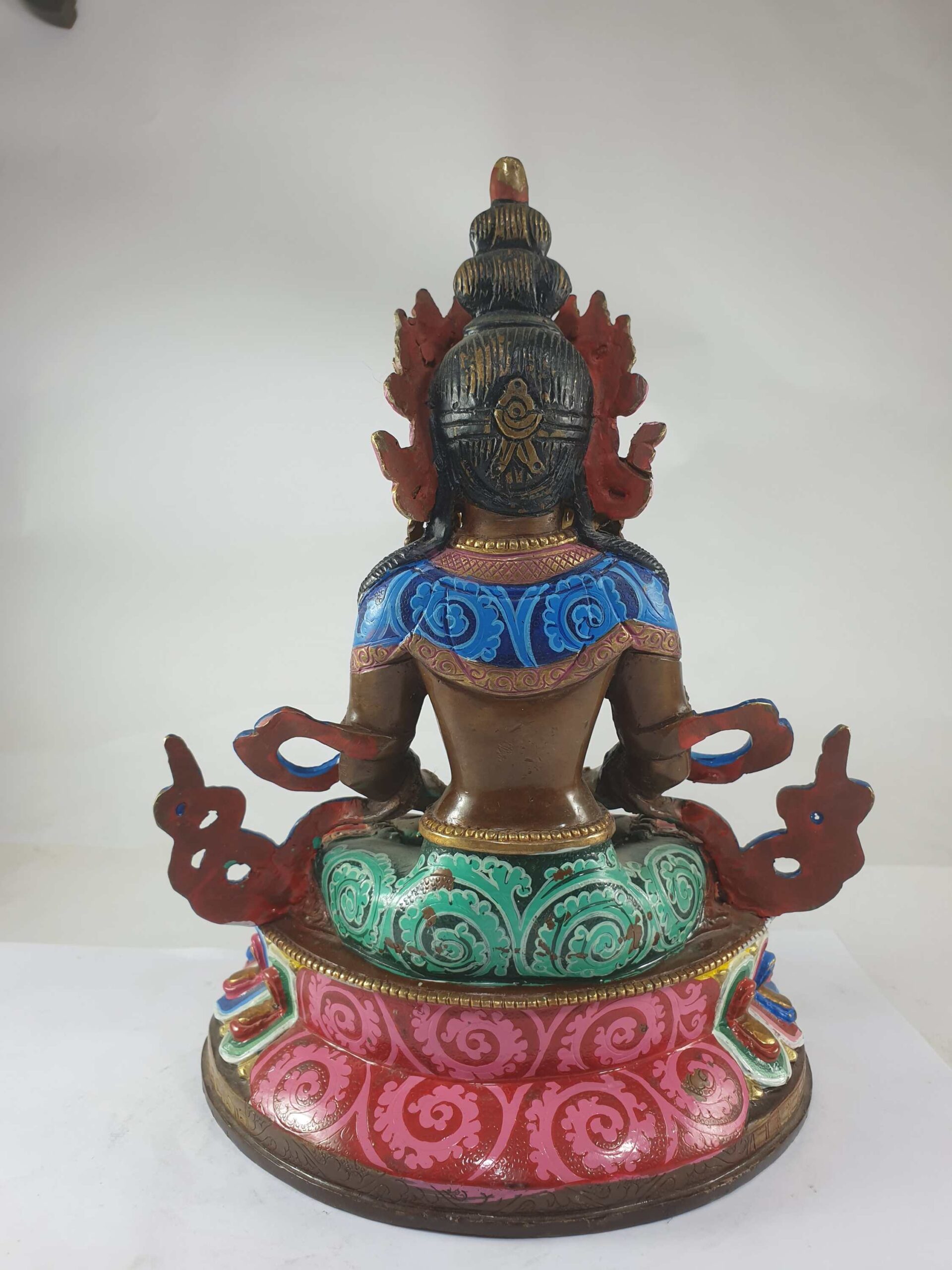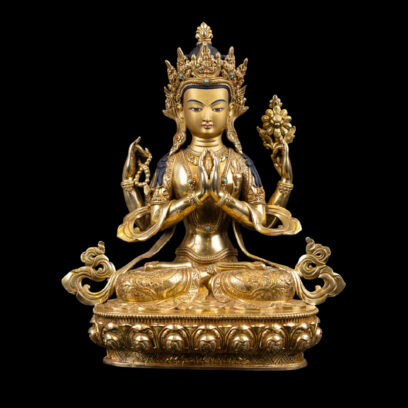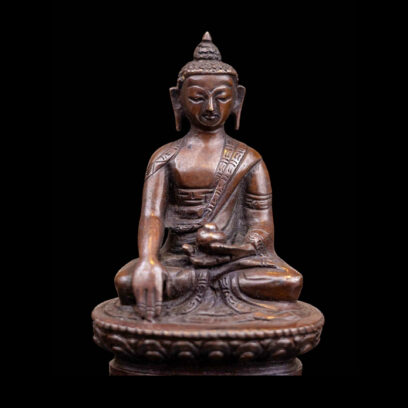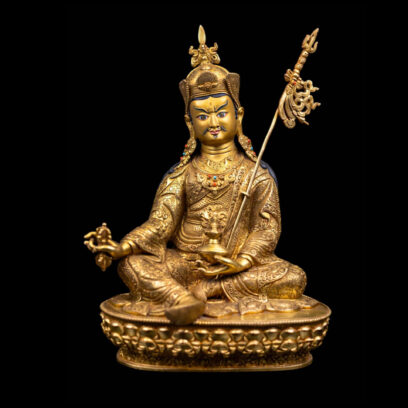Buddhist Statue Of Aparimita Traditional Color Finishing, Chepame, Amitayus
Item Code: HME23558
Weight: 1690 Grams
Size CM: 23 x 19 x 12
Material: Copper
Availability: Available
Aparimita: Brief Introduction
Buddha Aparimita, also known as Amitayus, is revered for bestowing long life and vitality upon his devotees. Represented in red, he holds an ambrosia vase in his hands, which are positioned in the dhyana mudra. As a Sambhogakaya Buddha, he is adorned with elaborate ornaments and wears a crown. He also features the Ushnisha and Urnakosh, symbols of enlightenment. Unlike other deities, Aparimita is always depicted alone, emphasizing his role in promoting spiritual and physical well-being.
Gold-Painted Face
The face of this Aparimita statue is meticulously painted with gold, bringing life to its most expressive features, such as the eyes and lips. This traditional technique highlights intricate details that cannot be fully captured through metal carving alone.
In Buddhist practice, painting the face with gold is a sacred ritual, symbolizing vitality and spiritual presence. This act prepares the statue for consecration and enhances its role in devotional practices. The artisans’ craftsmanship is evident in every brushstroke, imbuing the statue with a sense of divine energy and honoring its spiritual significance.
Traditional Color Finishing
This Aparimita statue features a traditional color finish, achieved through the careful application of gold and other hues. This method follows time-honored practices to represent the deity authentically, based on traditional color descriptions.
In Buddhist art, the use of traditional colors is not merely decorative; it carries deep symbolic meaning. Each shade corresponds to specific aspects of the deity’s spiritual significance. For Aparimita, the red color symbolizes life, vitality, and the blessings of long life. The harmonious blend of colors enhances the statue’s aesthetic and spiritual presence, making it a valuable addition to any sacred space.
Lost-Wax System
This statue is created using the Lost-Wax system, a traditional and intricate casting technique. The process begins with the creation of a detailed wax model, which is then coated with layers of ceramic material to form a mold. Once the mold hardens, the wax is melted and drained, leaving a cavity into which molten metal is poured.
After the metal cools and solidifies, the ceramic mold is carefully removed, revealing the final sculpture. This method ensures that every detail of the original wax model is preserved, resulting in a highly detailed and precise statue. The Lost-Wax system has been used for centuries, showcasing the mastery and dedication of Nepali artisans in creating sacred works of art.
Availability
This exquisite Aparimita statue is available, showcasing the rich cultural heritage and unmatched craftsmanship of Nepali artisans. With its gold-painted face, traditional color finishing, and meticulous attention to detail, this statue is a beautiful embodiment of Buddhist artistry and devotion. Perfect for both spiritual practice and artistic appreciation, this Aparimita statue is a timeless piece to treasure.
